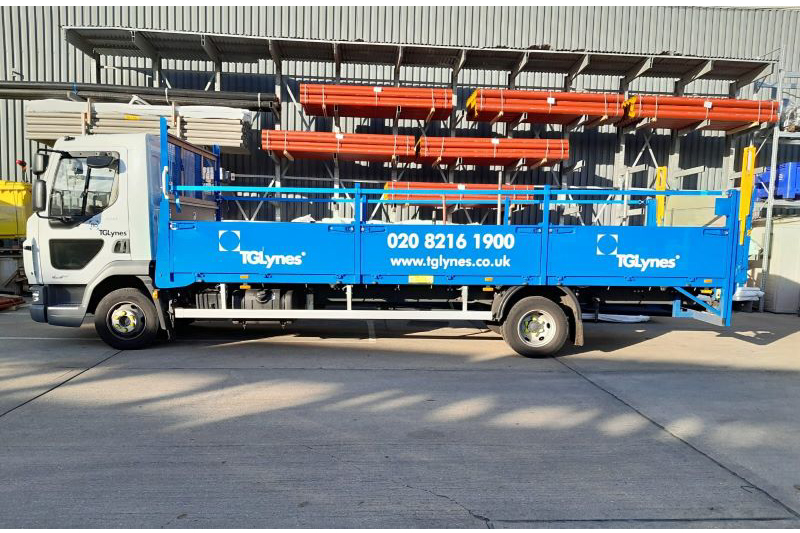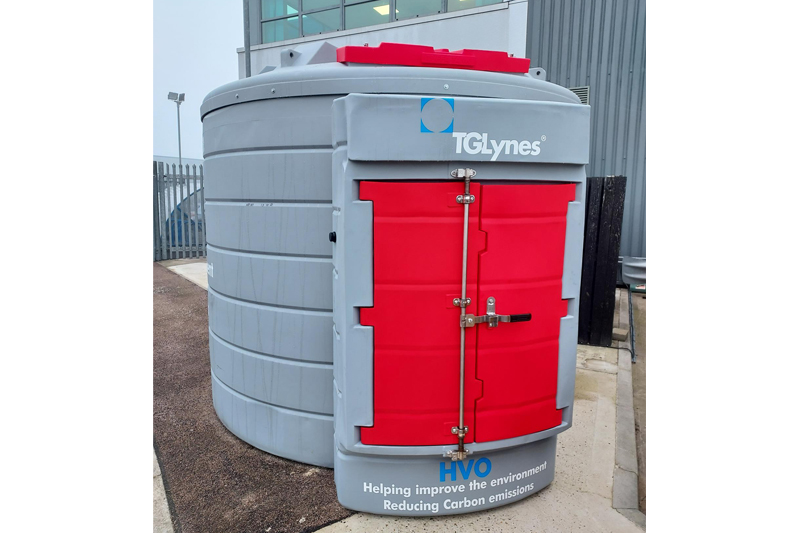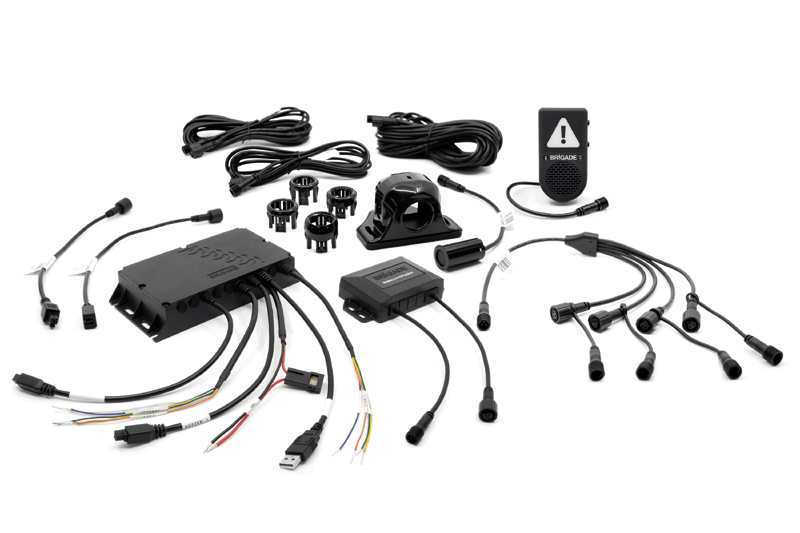
Sustainability and safety are the driving forces behind Grafton Group business TG Lynes’ latest investment in its transport fleet.
Taking the next step on its road to net zero, TG Lynes has introduced low carbon Hydrotreated Vegetable Oil (HVO) vehicles to its fleet. The heating, plumbing and air movement distributor has started using HVO in two of its 18 tonne lorries which were running on diesel, with the switch said to make them 90% more carbon efficient.
For easy on-site refuelling, the business has also installed a 10,000 litre HVO tank at its Enfield base.
HVO is described as a cleaner alternative to diesel and is manufactured from 100% renewable and sustainable waste, including vegetable oil, tallow and used cooking oil. Andrew Ingram, General Manager at TG Lynes, said: “We’re delighted to have introduced HVO to these two Euro 6 vehicles in our fleet. HVO is much better for the environment than diesel and the projected carbon saving through the course of 2023 is more than 12.5 tonnes.
“To put that into perspective, an average car would emit the same amount of carbon were it to drive 23,000 miles — or once around the world. TG Lynes is committed to achieving the ultimate goal of net zero by making tangible changes across all areas of the business. This move is just one part of that pledge.”
Indeed, Andrew said the business was considering rolling out HVO across its entire fleet of delivery vehicles throughout 2023, potentially saving 220 tonnes of carbon. As well as the HGVs, the delivery fleet also includes 3.5 tonne vans and an electric bike, whilst TG Lynes’ company vehicles are already 95% hybrid or fully electric — and the business has its own EV charge points on site.

The firm also has a 110kw solar system installed on the roof of its headquarters, providing more than 50% of the energy required for operations.
Andrew added: “From fuel combustion to being sustainable when purchasing electricity and recycling to choosing ethical suppliers, we are taking decisive action to ensure we are doing everything we can to lower our impact on the environment. Sustainability is not just a buzz word for TG Lynes — it has authenticity.”
Safety is also a key consideration for the company, and it has recently invested in state-of-the-art technology to warn its delivery drivers of potential hazards on the road. It is now in the process of adding Brigade’s Sidescan Predict system — an intelligent side detection system developed for rigid vehicles with large blind spots — to its entire fleet of HGV vehicles.
Six ultrasonic sensors on the side of the vehicle detect objects and vulnerable road users, whether they are stationary or moving. The technology then calculates the risk of collision and alerts the driver either visually or audibly, depending on the risk.
“Safety is a top priority for us. The protocols and safety equipment we have put in place, in conjunction with internal and external training, have enabled us to reduce near-miss incidents and has eradicated any side-swipe incidents and road traffic collisions.”
TG Lynes plans to have the technology installed on a quarter of its distribution fleet by March next year, with Andrew Ingram commenting: “We are constantly looking for new and innovative ways to make life easier and safer for all of our colleagues (and) it is crucial that vehicles with complex blind spots utilise technology to help reduce collisions.
“Brigade’s Sidescan Predict system is one of the most technically sophisticated products available. It will offer peace of mind to our drivers and false alarms are significantly reduced, meaning they can be confident in the accuracy of the warning.”
The company has used other Brigade safety products for more than 10 years and, in conjunction with driver training and regular internal safety briefings, it says it has managed to avoid any serious incidents with vulnerable road users, including pedestrians, cyclists, horse riders and motorbikes.
Andrew added: “Safety is a top priority for us. The protocols and safety equipment we have put in place, in conjunction with internal and external training, have enabled us to reduce near-miss incidents and has eradicated any side-swipe incidents and road traffic collisions.”
The Sidescan Predict system remains switched on when the vehicle’s speed is below 22mph, regardless of the indicator selection, and cannot be deactivated by the driver.
Emily Hardy, Brigade’s Marketing Manager, said: “Unlike existing systems, which simply register the presence of a potential obstacle, Sidescan Predict is constantly gathering data in a vehicle’s vicinity. This provides additional benefits to operators by significantly reducing false alarms and increasing confidence in the accuracy of warning alerts.
“We are delighted to add Sidescan Predict to our range of commercial vehicle safety systems and we are confident that it will make a positive impact to road and worksite safety and preventing fatalities.”
A version of this article appeared in the January edition of PBM. Click or tap here to read the full issue online via our website.









